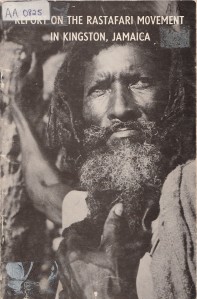
My column of June 2 in the Gleaner. After much public agitation and disapproval the University of the West Indies finally agreed to bow to public pressure and withdraw the offending bust. At a tumultuous press briefing (see video above for a brief taste of the event) the Dean confirmed that a new bust would be produced by August 2017. The sculptor would still be Raymond Watson. At the briefing Watson said that he had tried to create a youthful image of Garvey, to befit the University setting where the bust would be installed.
During his lifetime Garvey was much vilified as those who fight the status quo often are. Born in Jamaica he strode forth boldly into the world and changed it by rallying people of African origin who had been systematically exploited and denigrated by slavery. His influence rebounded all the way from the Americas to Africa, where he promised to take all those who wanted to ‘go back home’ in the immortal words of Jamaican singing star Bob Andy. To the pre-eminent shipping enterprise of the day, White Star Line, he counterpoised his Black Star Line, a fleet of ships that would carry the descendants of slaves back to Africa. The rest is history.
Decades after they’re gone how do we memorialize such individuals? In May 2017 during a short run of Garvey: The Musical at the University of the West Indies in Kingston a bust of the great man was unveiled at the Department of Humanities and Education. Members of the Marcus Garvey Movement on campus had demanded a statue of Garvey after a life-size one of Mahatma Gandhi was installed there a few years ago. How could the University pay tribute to an Indian leader before even nodding in the direction of its own home-grown hero, the first national hero of the country, they asked.
Accordingly the Dean of the Faculty of Humanities and Education (FHE), Professor Waibinte Wariboko, a Nigerian by birth, volunteered to take on the task of arranging for a suitable monument to the great man. A Jamaican sculptor, Raymond Watson, was commissioned to produce a bust, the University’s slender resources not stretching to accommodate the expense of a full-bodied statue in these hard times.
Details of the commission, such as the brief presented to the sculptor, are unknown but on May 19 the bust was duly unveiled in the courtyard of the FHE. The ceremony was timed to coincide with the visit of Professor Rahamon Adisa Bello, vice-chancellor of the University of Lagos in Nigeria, who jointly unveiled it with the Principal of the Mona Campus, Archibald McDonald. When they ritually removed the cover revealing the modest bust underneath a gasp of consternation went up from the audience. Rastafari representatives in the audience started grumbling loudly that this was the statue of an imposter, not Garvey, this slim, unremarkable, downtrodden looking person could never represent the magnificent Marcus. Garvey, they said. Many agreed.
“Garvey seems poorly. His posture conveys passivity. He looks like a weakling,” declared Carolyn Cooper in her column. #NotmyGarvey protested lecturer Isis Semaj-Hall commenting on what she called the “slimmed down interpretation” of the great leader. This is a “UWI interpretation of Garvey” said a Facebook commenter while Xavier Hutchinson accused the sculptor of “fat shaming one of my heroes.”
Suzette Gardner was kinder to Watson: “Maybe he was trying to inspire young people capturing Garvey as a youth. Still, Garvey might have been slimmer but his head was always big. Give us our big headed Garvey so the youth can know him as he was – young or old!”
According to Am’n Ron: “Regardless of the artist’s explanation this presentation should never have been approved. This was a moment for a recognizable rendering that will last through the generations and not a moment for a random artistic interpretation. From what period in Garvey’s life did he take this, and what is the image source he used? This seemingly made a mockery of the whole effort. I fully appreciate the spirit of the mounting of a Garvey bust, and I agree that it was overdue, but I’m in agreement with the woman who calmly said, “tek it dung!” To those who have the authority, please replace it. It feels disrespectful.”
Another Facebook commenter said: “I’ve been too upset to speak on it but i have much more to say. I will write and share. The best part of the ceremony for me was catching up with people I have not seen in ages. Unfortunately it was an upsetting occasion for all of us.”
For me the problem wasn’t so much that the bust didn’t look anything like the Garvey we feel we’ve come to know and love. It’s the scale and unambitious scope of the representation that bother me.The only other life-like sculptures on campus are of Mahatma Gandhi (Indian) and Philip Sherlock (white) both full body representations. Then for the champion of black identity you have a modest bust. It’s a problem to say the least.
In the weeks since the unveiling calls have been mounting for the removal of the ‘fake’ statue of Garvey. The Gandhi and Sherlock sculptures were gifts to the university, and it may be that those who feel strongly about this might have to undertake to commission a better representation of Garvey that can be situated at the University of the West Indies or some other location.

In future any public commissions of art should be informed by the well-documented history of responses to public monuments in Jamaica. Edna Manley lecturer and first Stuart Hall Fellow Petrina Dacres has written an entire thesis on the subject. There is no excuse to be caught by surprise like this. Contrary to what many seem to think, commissions of public statuary are not occasions for artists to wield artistic license and express themselves as they would with work meant for a gallery or private setting.








































